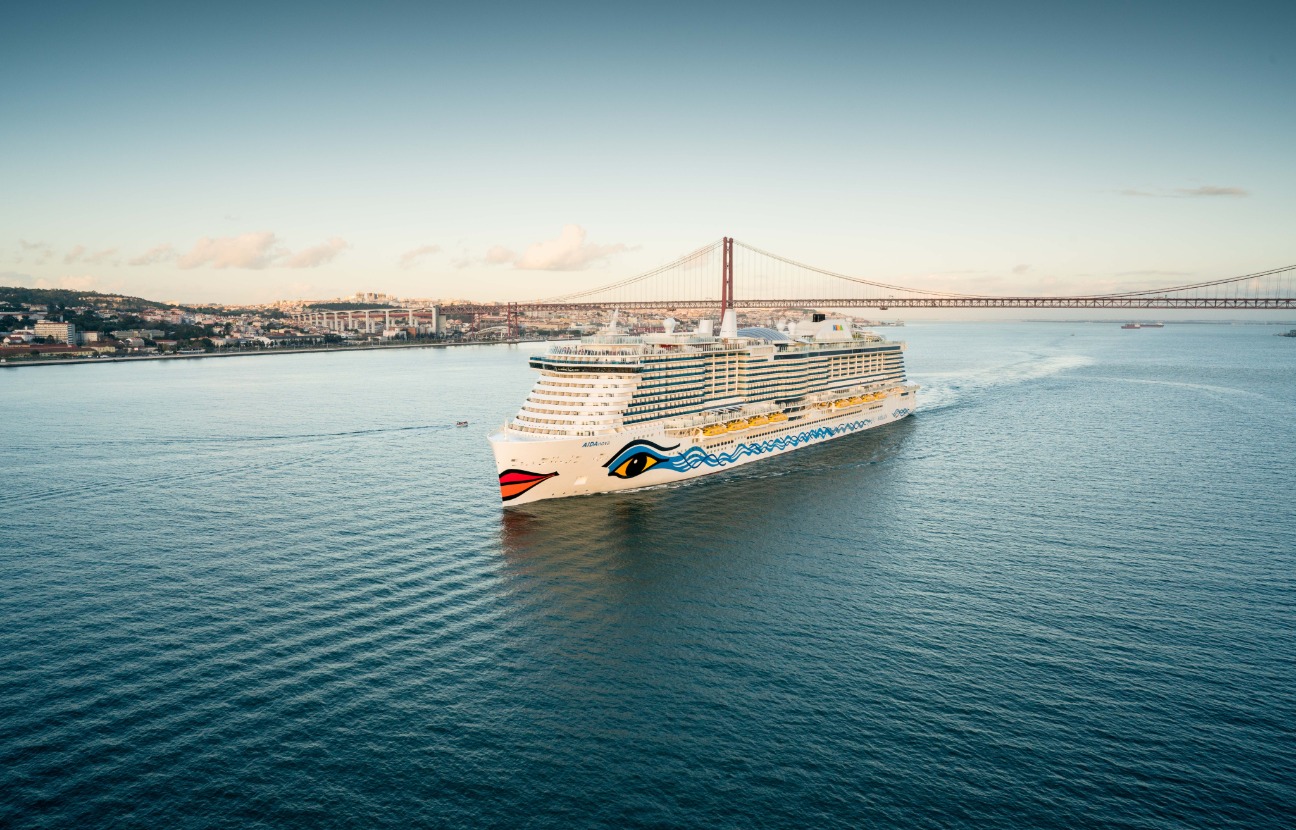Copenhagen Welcomes Shore Power Milestone
AIDAnova's Historic Port Call

On 2 June 2025, a new chapter in sustainable cruising was written as King Frederik X of Denmark, joined by EU Commissioner for Energy and Housing Dan Jørgensen and Danish Minister of Transport Thomas Danielsen, inaugurated the new shore power system at Copenhagen’s Oceankaj Cruise Terminal. During the ceremony, AIDAnova became the first cruise ship to connect to the shore power system in Copenhagen — marking a significant milestone in decarbonising cruise travel in Northern Europe.
Copenhagen is now the 14th European cruise port where AIDA ships can access shore power. With 73 planned AIDA ship calls in 2025, the Danish capital has become a key port of call in the region for AIDA Cruises, a leader in sustainability within the cruise industry.
“Thanks to the use of shore power, we can switch off the main engines on board our cruise ships and thus help to reduce local emissions in the ports,” said an AIDA Cruises spokesperson in an exclusive interview with MoveTheNeedle.news.
How Shore Power Works — and Why It Matters
Shore power allows a cruise ship to draw electricity from the grid via a land-based cable while docked, rather than running its on-board auxiliary engines. When the electricity provided is from renewable sources, the result is a near-complete reduction in local emissions — including carbon dioxide (CO₂), nitrogen oxides (NOₓ), sulphur dioxide (SO₂), and particulate matter.
Given that cruise ships often spend 8–10 hours per day in port, the ability to connect to land-based electricity drastically cuts emissions and reduces noise pollution for nearby communities.
“Compared to the operation of auxiliary engines, shore power can save up to 100% of emissions during a port call,” AIDA Cruises explained.
AIDA's Shore Power Strategy: From Vision to Reality
AIDA Cruises began preparing its fleet for shore power use as far back as 2004, integrating the necessary systems into ship designs. But it took another decade before the first infrastructure caught up. In 2017, AIDAsol became the first cruise ship to begin regular shore power operations in Europe, at Hamburg Altona.
As of mid-2025, AIDA ships can access shore power in 15 ports across seven European countries:
- Germany: Hamburg-Altona, Hamburg-Steinwerder, Kiel, Warnemünde
- Denmark: Copenhagen, Aarhus
- Norway: Bergen, Alesund, Haugesund, Kristiansand, Oslo
- Netherlands: Amsterdam, Rotterdam
- Sweden: Stockholm
- Malta
- United Kingdom: Southampton
“The port call in Malmö was something special, because it shows how consistently AIDA is implementing its sustainability strategy - also internationally,” the spokesperson noted.
Challenges and the Road Ahead
While the benefits are clear, shore power infrastructure remains limited globally. AIDA highlighted that each port must invest heavily in new facilities, and ships require specialised onboard “sockets” to connect.
“Each port can decide for itself where and how to purchase electricity. The expansion of port facilities is of course desirable thanks to political subsidies and support programmes, but this takes time,” said AIDA. “We are in continuous contact with other ports, such as Le Havre, which want to open their shore power system soon and have already carried out initial tests.”
From LNG to Batteries and Biofuels: A Multifaceted Strategy
AIDA Cruises’ commitment to climate innovation extends beyond shore power. In 2018, AIDAnova became the world’s first LNG-powered cruise ship, followed by AIDAcosma in 2021. While fossil LNG is not carbon-neutral, it emits 20% less CO₂ than marine gas oil and significantly reduces other pollutants.
“Even if LNG is of fossil origin, it plays an important role in the maritime energy transition,” AIDA stated.
In 2022, the company installed a 10 megawatt-hour lithium-ion battery system aboard AIDAprima — then the largest of its kind in passenger shipping. This allows the ship to operate in engine-free, emission-free mode for short durations.
In September 2024, AIDAprima took another leap by being fuelled with 100% renewable biofuel (BMF100) from VARO Energy for a voyage through the Norwegian fjords.
“With the lithium-ion battery storage system, it will also be possible to operate AIDAprima in emission-free mode without engines for a limited period,” AIDA noted.
Conclusion: A Blueprint for the Future of Cruise Travel
AIDA’s long-term approach — from shore power and LNG to batteries and biofuels — reflects the company’s serious commitment to sustainable transformation. As more European ports follow Copenhagen’s example, the path to low-emission, even net-zero cruising, is becoming clearer — one port call at a time.